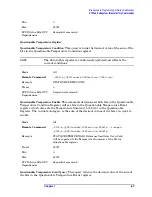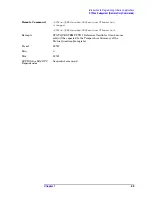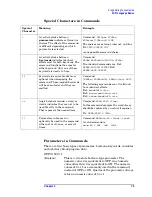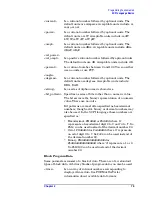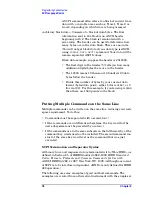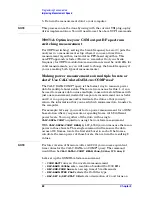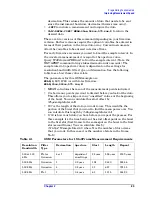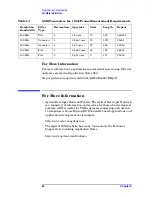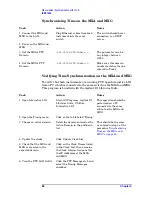
76
Chapter 2
Programming Fundamentals
SCPI Language Basics
A SCPI command often refers to a block of current trace
data with a variable name such as: Trace1, Trace2, or
trace3, depending on which trace is being accessed.
<arbitrary block data> Consists of a block of data bytes. The first
information sent in the block is an ASCII header
beginning with #. The block is terminated with a
semi-colon. The header can be used to determine how
many bytes are in the data block. There are no units.
(You will not get block data if your data type is ASCII,
using
FORMat:DATA ASCII
command. Your data will be
comma separated ASCII values.
Block data example: suppose the header is #512320.
• The first digit in the header (5) tells you how many
additional digits/bytes there are in the header.
• The 12320 means 12 thousand, 3 hundred, 20 data
bytes follow the header.
• Divide this number of bytes by your current data
format (bytes/data point), either 8 (for real,64), or 4
(for real,32). For this example, if you’re using real64
then there are 1540 points in the block.
Putting Multiple Commands on the Same Line
Multiple commands can be written on the same line, reducing your code
space requirement. To do this:
• Commands must be separated with a semicolon (;).
• If the commands are in different subsystems, the key word for the
new subsystem must be preceded by a colon (:).
• If the commands are in the same subsystem, the full hierarchy of the
command key words need not be included. The second command can
start at the same key word level as the command that was just
executed.
SCPI Termination and Separator Syntax
All binary trace and response data is terminated with <NL><END>, as
defined in Section 8.5 of IEEE Standard 488.2-1992,
IEEE Standard
Codes, Formats, Protocols and Common Commands for Use with
ANSI/IEEE Std 488.1-1987
. New York, NY, 1992. (Although one intent
of SCPI is to be interface independent, <END> is only defined for IEEE
488 operation.)
The following are some examples of good and bad commands. The
examples are created from a theoretical instrument with the simple set






